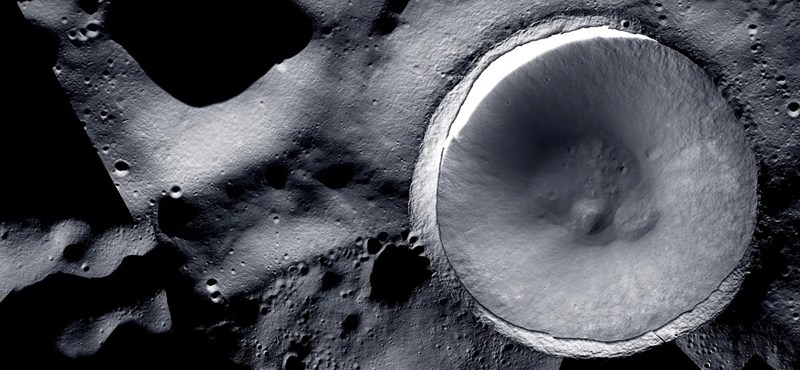[{“available”:true,”c_guid”:”fbcbe659-3219-4147-bddb-2c5cae3272ea”,”c_author”:”Domány András”,”category”:”kkv”,”description”:”Májustól elég lesz, ha telefonon adnak tanácsot.”,”shortLead”:”Májustól elég lesz, ha telefonon adnak tanácsot.”,”id”:”20240207_Tenyleg_meghuzta_a_kormany_nem_kell_a_patikus_jelenlete_a_kis_patikakban”,”image”:”https://api.hvg.hu/Img/ffdb5e3a-e632-4abc-b367-3d9b3bb5573b/fbcbe659-3219-4147-bddb-2c5cae3272ea.jpg”,”index”:0,”item”:”81297ef6-0603-4607-8da6-55424665dc7f”,”keywords”:null,”link”:”/kkv/20240207_Tenyleg_meghuzta_a_kormany_nem_kell_a_patikus_jelenlete_a_kis_patikakban”,”timestamp”:”2024. február. 07. 09:16″,”title”:”Tényleg meglépte a kormány: májustól az se baj, ha nincs gyógyszerész a kis patikákban”,”trackingCode”:”RELATED”,”c_isbrandchannel”:false,”c_isbrandcontent”:false,”c_isbrandstory”:false,”c_isbrandcontentorbrandstory”:false,”c_isbranded”:false,”c_ishvg360article”:false,”c_partnername”:null,”c_partnerlogo”:”00000000-0000-0000-0000-000000000000″,”c_partnertag”:null},{“available”:true,”c_guid”:”624ff525-b569-4f15-8534-764ece89243b”,”c_author”:”MTI”,”category”:”tudomany”,”description”:”A globális felmelegedés a korábban véltnél gyorsabban zajlik, és hosszabb ideje tart – állítják ausztrál kutatók egy tengeri szivacsokkal kapcsolatos tanulmányban.”,”shortLead”:”A globális felmelegedés a korábban véltnél gyorsabban zajlik, és hosszabb ideje tart – állítják ausztrál kutatók…”,”id”:”20240206_ausztral_kutatas_ceratoporella_nicholsoni_tengeri_szivacsok_globalis_felmelegedes_4_celsius_fok_2050_klimavaltozas”,”image”:”https://api.hvg.hu/Img/ffdb5e3a-e632-4abc-b367-3d9b3bb5573b/624ff525-b569-4f15-8534-764ece89243b.jpg”,”index”:0,”item”:”3f707da9-a0ba-495e-881b-e278693fb587″,”keywords”:null,”link”:”/tudomany/20240206_ausztral_kutatas_ceratoporella_nicholsoni_tengeri_szivacsok_globalis_felmelegedes_4_celsius_fok_2050_klimavaltozas”,”timestamp”:”2024. február. 06. 20:03″,”title”:”Megkongatták a vészharangot: eddig elszámolták a klímaváltozást, 4 Celsius-fokkal is megugorhat a hőmérséklet”,”trackingCode”:”RELATED”,”c_isbrandchannel”:false,”c_isbrandcontent”:false,”c_isbrandstory”:false,”c_isbrandcontentorbrandstory”:false,”c_isbranded”:false,”c_ishvg360article”:false,”c_partnername”:null,”c_partnerlogo”:”00000000-0000-0000-0000-000000000000″,”c_partnertag”:null},{“available”:true,”c_guid”:”3a5f49d3-1838-4eb1-9fd4-272a879906d2″,”c_author”:”Serdült Viktória”,”category”:”itthon”,”description”:”Az Egyesült Államok és több NATO-tagország nagykövete erős üzenetet küldött a magyar kormánynak.”,”shortLead”:”Az Egyesült Államok és több NATO-tagország nagykövete erős üzenetet küldött a magyar kormánynak.”,”id”:”20240205_Pressman_a_Parlamentben_A_mai_nap_lehetoseg_lett_volna_megszavazni_Svedorszag_NATOcsatlakozasat”,”image”:”https://api.hvg.hu/Img/ffdb5e3a-e632-4abc-b367-3d9b3bb5573b/3a5f49d3-1838-4eb1-9fd4-272a879906d2.jpg”,”index”:0,”item”:”9f651399-68b6-4f8d-b4f3-1ba0bde62d03″,”keywords”:null,”link”:”/itthon/20240205_Pressman_a_Parlamentben_A_mai_nap_lehetoseg_lett_volna_megszavazni_Svedorszag_NATOcsatlakozasat”,”timestamp”:”2024. február. 05. 14:46″,”title”:”Pressman: A mai nap lehetőség lett volna megszavazni Svédország NATO-csatlakozását”,”trackingCode”:”RELATED”,”c_isbrandchannel”:false,”c_isbrandcontent”:false,”c_isbrandstory”:false,”c_isbrandcontentorbrandstory”:false,”c_isbranded”:false,”c_ishvg360article”:false,”c_partnername”:null,”c_partnerlogo”:”00000000-0000-0000-0000-000000000000″,”c_partnertag”:null},{“available”:true,”c_guid”:”78effb58-1fa3-4bba-9375-04f5fe9cc5c8″,”c_author”:”hvg.hu”,”category”:”itthon”,”description”:”Aktivizálták magukat az ellenzéki pártok, tüntetés lesz az államfő ellen, és megfosztanák a pozíciójától.”,”shortLead”:”Aktivizálták magukat az ellenzéki pártok, tüntetés lesz az államfő ellen, és megfosztanák a pozíciójától.”,”id”:”20240205_Novak_Katalin_kegyelem_Momentum_Mi_Hazank_MSZP”,”image”:”https://api.hvg.hu/Img/ffdb5e3a-e632-4abc-b367-3d9b3bb5573b/78effb58-1fa3-4bba-9375-04f5fe9cc5c8.jpg”,”index”:0,”item”:”7634c901-8cac-4e22-9f69-41fd5d3f25d1″,”keywords”:null,”link”:”/itthon/20240205_Novak_Katalin_kegyelem_Momentum_Mi_Hazank_MSZP”,”timestamp”:”2024. február. 05. 15:26″,”title”:”Tovább tart a vihar Novák Katalin kegyelmi döntése körül: az ellenzék a távozását követeli és törvénymódosítást kezdeményez”,”trackingCode”:”RELATED”,”c_isbrandchannel”:false,”c_isbrandcontent”:false,”c_isbrandstory”:false,”c_isbrandcontentorbrandstory”:false,”c_isbranded”:false,”c_ishvg360article”:false,”c_partnername”:null,”c_partnerlogo”:”00000000-0000-0000-0000-000000000000″,”c_partnertag”:null},{“available”:true,”c_guid”:”d6c4a1f6-e622-479c-9424-a27e400cadf1″,”c_author”:”Lengyel Miklós”,”category”:”gazdasag”,”description”:”A Bloomberg szakértői nagy európai cégek Nagy-Britanniában működő szélfarmjainak számláit vizsgálták meg, kiderült: a fogyasztók sokkal kevesebb energiát használtak fel, mint amennyiért fizettek.”,”shortLead”:”A Bloomberg szakértői nagy európai cégek Nagy-Britanniában működő szélfarmjainak számláit vizsgálták meg, kiderült…”,”id”:”20240205_A_nagy_szelfarmok_tulbecsulik_a_teljesitmenyuket_es_a_fogyasztok_fizetik_meg_ennek_az_arat”,”image”:”https://api.hvg.hu/Img/ffdb5e3a-e632-4abc-b367-3d9b3bb5573b/d6c4a1f6-e622-479c-9424-a27e400cadf1.jpg”,”index”:0,”item”:”cdf1c224-7040-45cf-8039-e54ad0b32140″,”keywords”:null,”link”:”/gazdasag/20240205_A_nagy_szelfarmok_tulbecsulik_a_teljesitmenyuket_es_a_fogyasztok_fizetik_meg_ennek_az_arat”,”timestamp”:”2024. február. 05. 12:25″,”title”:”A nagy szélfarmok túlbecsülik a teljesítményüket, és a fogyasztók fizetik meg ennek az árát”,”trackingCode”:”RELATED”,”c_isbrandchannel”:false,”c_isbrandcontent”:false,”c_isbrandstory”:false,”c_isbrandcontentorbrandstory”:false,”c_isbranded”:false,”c_ishvg360article”:false,”c_partnername”:null,”c_partnerlogo”:”00000000-0000-0000-0000-000000000000″,”c_partnertag”:null},{“available”:true,”c_guid”:”87e51234-48ec-4895-9feb-8506f02b0eb4″,”c_author”:”hvg.hu”,”category”:”cegauto”,”description”:”A kiváló 3 literes 6 hengeres turbómotorban a jelek szerint sikerült még találni néhány eddig szunnyadó lóerőt.”,”shortLead”:”A kiváló 3 literes 6 hengeres turbómotorban a jelek szerint sikerült még találni néhány eddig szunnyadó lóerőt.”,”id”:”20240206_560_loeros_lett_az_uj_bmw_m2_manhart_tuning”,”image”:”https://api.hvg.hu/Img/ffdb5e3a-e632-4abc-b367-3d9b3bb5573b/87e51234-48ec-4895-9feb-8506f02b0eb4.jpg”,”index”:0,”item”:”38f2cca2-ce40-4788-a21a-173df6a25669″,”keywords”:null,”link”:”/cegauto/20240206_560_loeros_lett_az_uj_bmw_m2_manhart_tuning”,”timestamp”:”2024. február. 06. 07:21″,”title”:”560 lóerős lett az új BMW M2″,”trackingCode”:”RELATED”,”c_isbrandchannel”:false,”c_isbrandcontent”:false,”c_isbrandstory”:false,”c_isbrandcontentorbrandstory”:false,”c_isbranded”:false,”c_ishvg360article”:false,”c_partnername”:null,”c_partnerlogo”:”00000000-0000-0000-0000-000000000000″,”c_partnertag”:null},{“available”:true,”c_guid”:”0dc5bd8d-4ed1-4c9d-9ec5-4092a3e0df98″,”c_author”:”hvg.hu”,”category”:”itthon”,”description”:”Az Opinio Institute a 16–59 év közötti, okostelefonnal rendelkező magyarok körében végzett reprezentatív felmérést a kérdésről.”,”shortLead”:”Az Opinio Institute a 16–59 év közötti, okostelefonnal rendelkező magyarok körében végzett reprezentatív felmérést…”,”id”:”20240205_Magyarorszag_Svedorszag_NATO_kozvelemenykutatas_Opinio”,”image”:”https://api.hvg.hu/Img/ffdb5e3a-e632-4abc-b367-3d9b3bb5573b/0dc5bd8d-4ed1-4c9d-9ec5-4092a3e0df98.jpg”,”index”:0,”item”:”1bc23ea5-cb6d-4dcf-941e-7a5499d6143a”,”keywords”:null,”link”:”/itthon/20240205_Magyarorszag_Svedorszag_NATO_kozvelemenykutatas_Opinio”,”timestamp”:”2024. február. 05. 15:57″,”title”:”A magyarok mindössze öt százaléka gondolja úgy, hogy az ország számára hasznos a svéd NATO-csatlakozás halogatása”,”trackingCode”:”RELATED”,”c_isbrandchannel”:false,”c_isbrandcontent”:false,”c_isbrandstory”:false,”c_isbrandcontentorbrandstory”:false,”c_isbranded”:false,”c_ishvg360article”:false,”c_partnername”:null,”c_partnerlogo”:”00000000-0000-0000-0000-000000000000″,”c_partnertag”:null},{“available”:true,”c_guid”:”4aba39a4-9795-45fb-99b9-f583588a7f9c”,”c_author”:”hvg.hu”,”category”:”elet”,”description”:”A Telegraph elemzése szerint elképzelhető: nem véletlen, hogy most derült ki, hogy vizsgálat zajlik a Red Bull csapatfőnöke ellen.”,”shortLead”:”A Telegraph elemzése szerint elképzelhető: nem véletlen, hogy most derült ki, hogy vizsgálat zajlik a Red Bull…”,”id”:”20240206_Christian_Horner_Red_Bull_vizsgalat_Geri_Halliwell”,”image”:”https://api.hvg.hu/Img/ffdb5e3a-e632-4abc-b367-3d9b3bb5573b/4aba39a4-9795-45fb-99b9-f583588a7f9c.jpg”,”index”:0,”item”:”6bd4ce14-d268-4144-91ab-5ca1a7ba8dbb”,”keywords”:null,”link”:”/elet/20240206_Christian_Horner_Red_Bull_vizsgalat_Geri_Halliwell”,”timestamp”:”2024. február. 06. 10:41″,”title”:”Geri Halliwell „összetört”, miután Christian Hornert megvádolták”,”trackingCode”:”RELATED”,”c_isbrandchannel”:false,”c_isbrandcontent”:false,”c_isbrandstory”:false,”c_isbrandcontentorbrandstory”:false,”c_isbranded”:false,”c_ishvg360article”:false,”c_partnername”:null,”c_partnerlogo”:”00000000-0000-0000-0000-000000000000″,”c_partnertag”:null}]

We recommend it from the first page














































